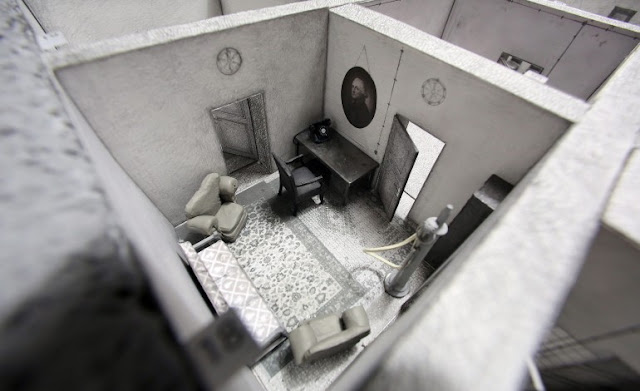Take A Look At Where A Monster Lived And Died - From Nov 1, 2016, the new “Führerbunker” (Hitler’s bunker) exhibition in Berlin will offer guided tours around a replica of the study in which Hitler committed suicide in 1945.
Today, the original site of the bunker in which Adolf Hitler spent his final days is covered by a car park and a simple, discreet plaque. The Führerbunker exhibition, curated by the private Berlin Story Museum, reproduces the bunker in a former air-raid shelter on the Wilhelmstraße in central-west Berlin, just 2km from the original site. The controversial exhibition has been accused of sensationalising the war crimes committed under Hitler’s leadership.
A selection of replica rooms includes the office in which Hitler shot himself on April 30, 1945. The tour – the only way to visit the bunker’s rooms – begins in a former World War II shelter, originally built to house 3,500 people but which, by the end of the war, gave refuge to 12,000 citizens.
In an interview with The Local, Wieland Giebel from the Historiale organisation (which runs the Berlin Story Museum) explained that the choice of an air raid bunker was important for the exhibit’s relationship with the shelter’s history: “We did not want to separate one from the other.” While the exhibition provides a replica of Hitler’s office and a scale model of the entire underground complex, the Berlin Story museum documents 800 years of Berlin’s history, including Nazism.
The museum’s exhibition, however, has come in for heavy criticism, and been accused of poor taste and sensationalism. The city of Berlin has many artefacts documenting the Nazi regime, but most are presented through sober, discreet exhibitions, and some – such as the original site of the Führerbunker – are barely acknowledged, for fear of attracting Neo-Nazi sympathisers or site vandalism.


0 comments:
Post a Comment